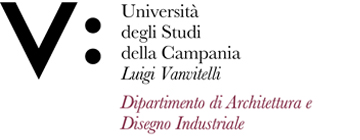Corrado CHISARI
Insegnamento di STRUCTURAL ASSESMENT OF EXISTING BUILDINGS
Corso di laurea magistrale in ARCHITETTURA - RIGENERAZIONE DELL'AMBIENTE COSTRUITO
SSD: ICAR/09
CFU: 8,00
ORE PER UNITÀ DIDATTICA: 64,00
Periodo di Erogazione: Primo Quadrimestre
Italiano
| Lingua di insegnamento | Inglese |
| Contenuti | Il corso è composto dai seguenti moduli: |
| Testi di riferimento | - Moduli 1-2: Dispense fornite dal docente. |
| Obiettivi formativi | L'insegnamento, attraverso lezioni frontali, esercitazioni in classe e la redazione di un progetto strutturale, integra le conoscenze acquisite durante il precedente percorso triennale nell'ambito dell'ingegneria delle strutture. L’insegnamento fornirà conoscenze di base sui temi di progettazione e valutazione strutturale di strutture esistenti in cemento armato e muratura. Al termine del corso, lo studente dovrà essere in grado di: |
| Prerequisiti | Elementi di Meccanica delle Strutture: |
| Metodologie didattiche | Il corso si svilupperà in 64 ore di lezioni frontali, esercizi sviluppati in aula, esercitazioni riguardanti il progetto d'anno e seminari. Approssimativamente 10 ore saranno dedicate agli aspetti introduttivi al corso, 16 ore al modulo 1, 12 ore al modulo 2, 10 ore al modulo 3, 6 ore al modulo 4, 10 ore alle prove di valutazione intermedie. Variazioni su questo schema saranno altresì possibili a seconda dello sviluppo del corso. |
| Metodi di valutazione | La verifica dell’apprendimento si svolgerà durante una prova orale. L'approvazione del progetto da parte del docente è propedeutica all'accesso all'esame finale, il quale riguarderà gli argomenti trattati nel corso nonché una discussione degli elaborati sviluppati. |
| Altre informazioni | Le diapositive mostrate in aula, insieme ad altro materiale necessario (norme, software), saranno rese disponibili agli studenti sul gruppo Teams del corso. |
| Programma del corso | - Statica, risoluzione di strutture isostatiche e iperstatiche, calcolo delle tensioni e verifiche di resistenza al limite elastico (10 ore) |
English
| Teaching language | English |
| Contents | The course is composed by the following modules: |
| Textbook and course materials | - Modules 1-2: Lecture notes. |
| Course objectives | Through face-to-face lessons, class exercises and a yearly assignment, the course will complement knowledge in structural engineering acquired during the previous three-year degree program. The course will provide basics knowledge and skills on the topics of structural design and assessment. At the end of the course, the student will be able to: |
| Prerequisites | Foundations of Structural Mechanics: |
| Teaching methods | The course will consist of 64 hours of lectures, classroom exercises, exercises related to the year's project and seminars. Approximately 10 hours will be dedicated to the introductory aspects of the course, 16 hours to module 1, 12 hours to module 2, 10 hours to module 3, 6 hours to module 4, 10 hours to intermediate assessment tests. Variations in this scheme will also be possible depending on the development of the course. |
| Evaluation methods | The student assessment will take place during an oral exam. The lecturer’s approval of the assignment is necessary to access the final exam, which will cover the topics covered in the course as well as a discussion of the assignment developed. The minimum requirements for passing the test concern the possession of basic knowledge on the mechanics of structures, on the behavior of building materials, on design methodologies, on problems related to seismic loads and on the assessment and design of reinforced concrete and masonry structures. |
| Other information | The slides shown during the course, along with other necessary material (standards, software), will be made available to students on the course's Teams group. |
| Course Syllabus | - Statics, resolution of statically determinate and indeterminate structures, calculation of stresses and safety checks at the elastic limit (10 hours) |








